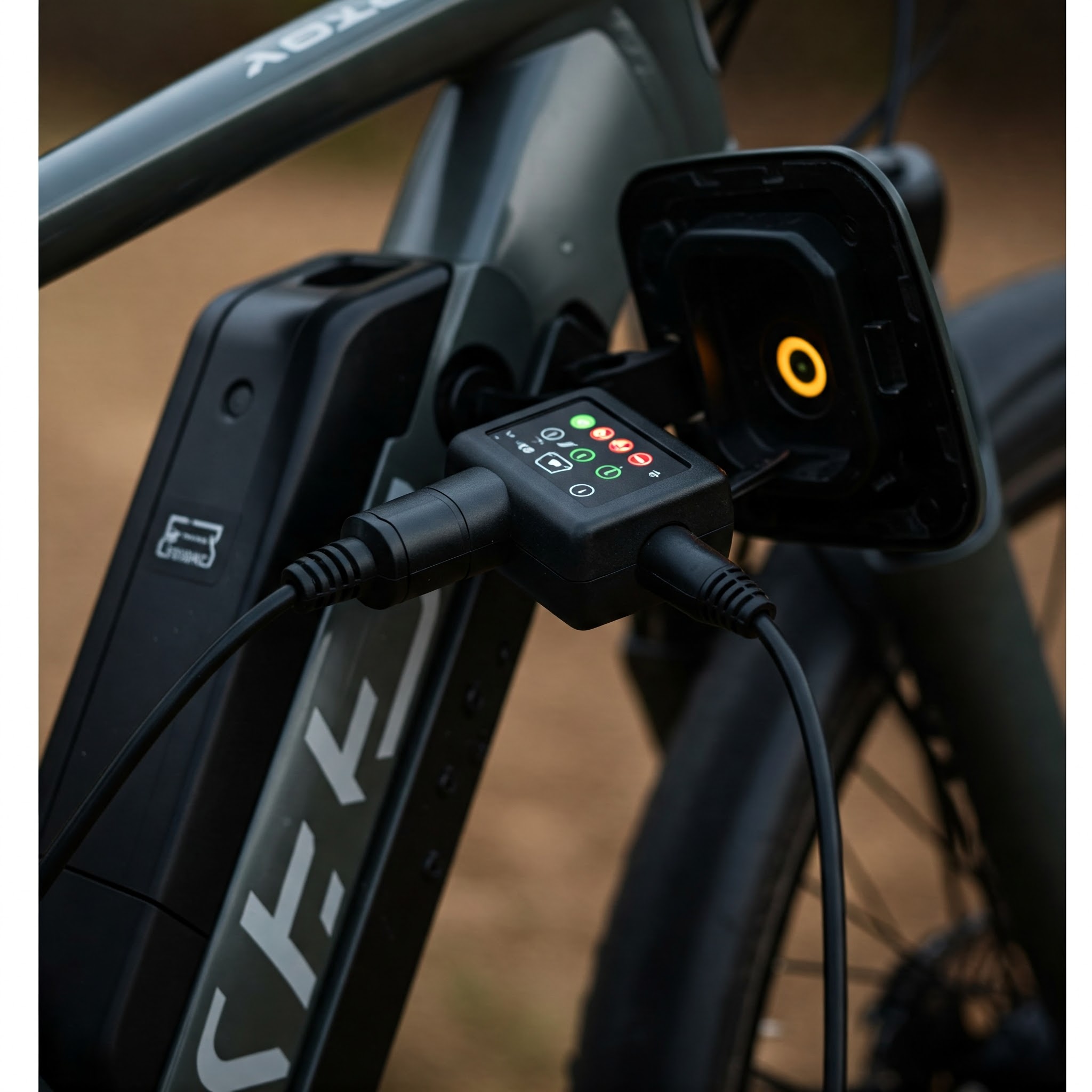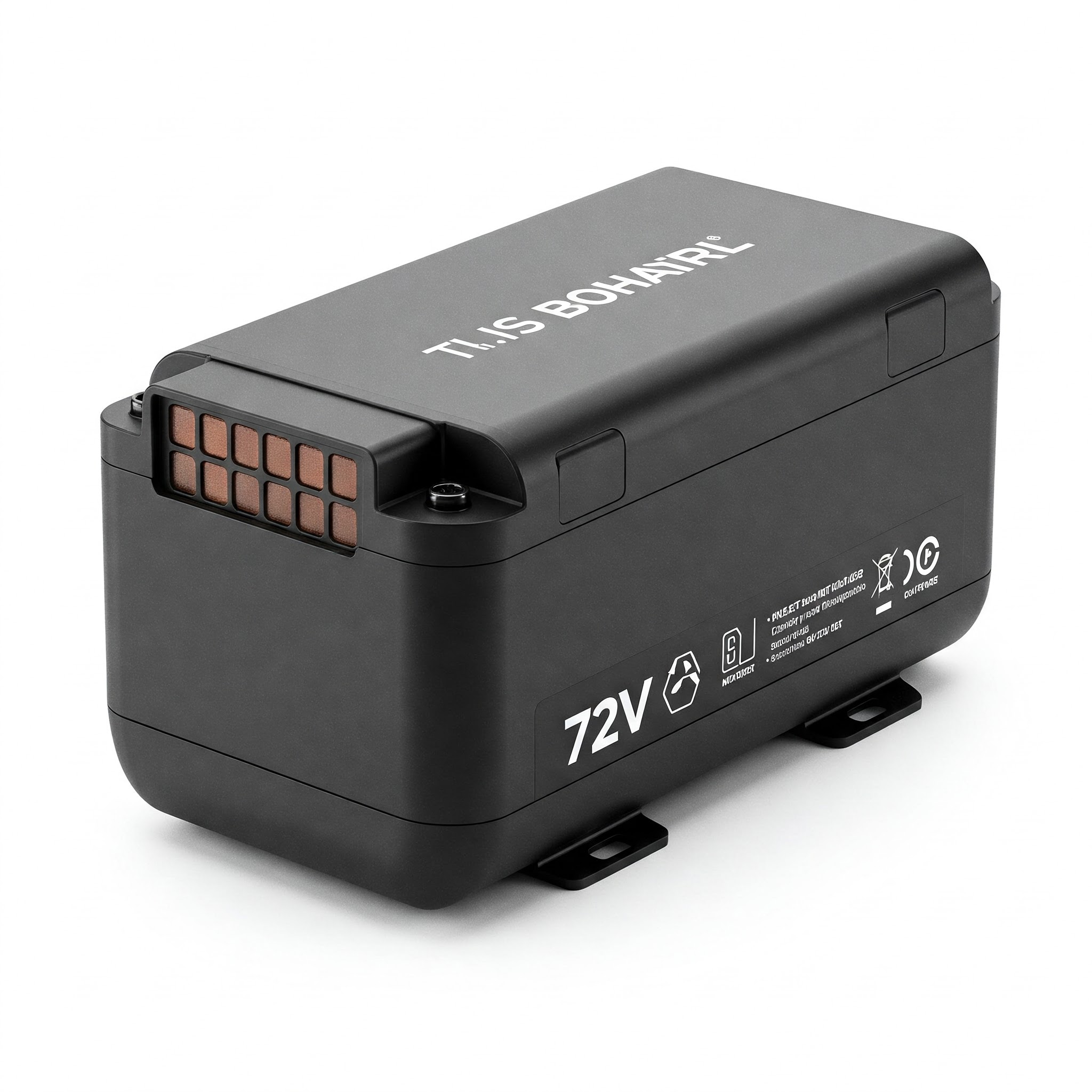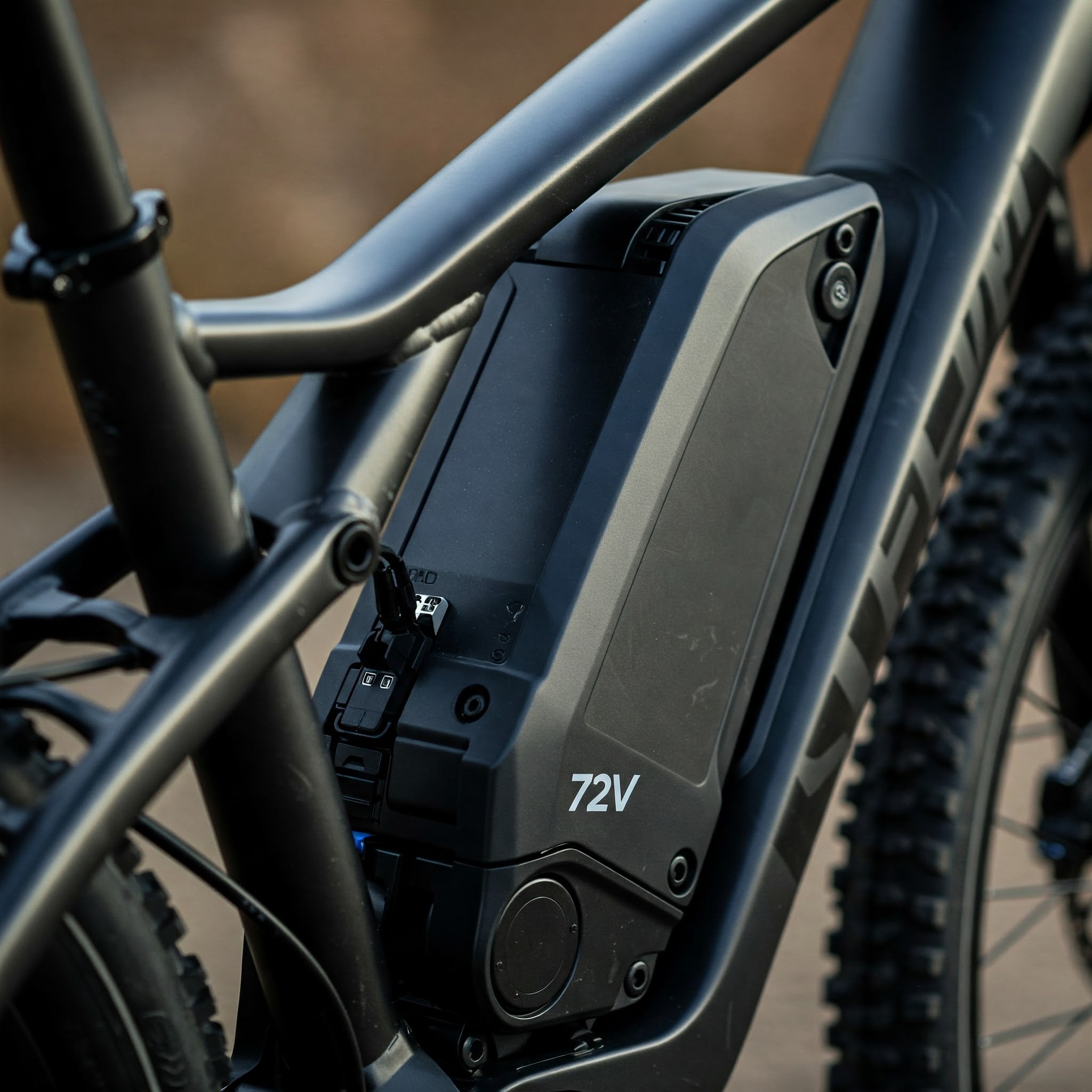Powering Your Electric Adventure
Have you ever found yourself stranded with a dead ebike battery miles from home? Or perhaps you’ve noticed your once-reliable ebike battery isn’t holding a charge like it used to? If so, you’re not alone. As an avid ebike enthusiast who has logged thousands of miles on various electric bikes over the years, I’ve learned firsthand how crucial the right ebike battery charger is to both your riding experience and the longevity of your investment.
Ebike battery chargers might seem like simple accessories, but they’re actually sophisticated devices that can dramatically impact your ebike’s performance, battery lifespan, and even your safety. In fact, according to a recent study by the Electric Bike Research Institute, using the appropriate charger can extend your battery life by up to 40% compared to using mismatched or low-quality charging equipment.
Whether you’re a daily commuter, weekend warrior, or just getting started with your first electric bike, understanding how to choose and use the right ebike battery charger is essential knowledge. In this comprehensive guide, we’ll explore everything you need to know about ebike battery chargers, from the basics of how they work to advanced features that can help you get the most out of your electric rides.
So, let’s plug in and power up your ebike knowledge!
Understanding Ebike Battery Chargers: The Basics
Before diving into specific products and recommendations, it’s important to understand what an ebike battery charger actually does and why it matters so much.
What Exactly Is an Ebike Battery Charger? 🔋
An ebike battery charger is a specialized power adapter designed to safely and efficiently recharge the lithium-ion batteries that power electric bikes. Unlike standard chargers, ebike battery chargers must deliver precise voltage and current levels to match your specific battery’s requirements.
These devices convert standard AC household electricity into the DC power your ebike battery needs, while also regulating the charging process to prevent overcharging, overheating, and other potentially damaging conditions.
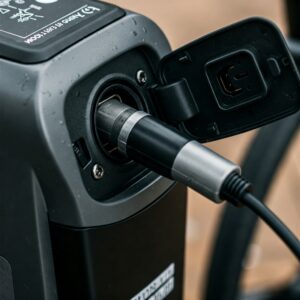
Why Your Charger Choice Matters ⚡
The quality and compatibility of your ebike battery charger directly affects:
✅ Battery lifespan – The right charger can significantly extend the number of charging cycles your battery will deliver
✅ Charging time – Premium chargers can reduce waiting time between rides
✅ Safety – Quality chargers include multiple protections against electrical hazards
✅ Performance – Proper charging maintains consistent power delivery during rides
❌ Using the wrong charger can lead to reduced range, diminished battery capacity, and even dangerous battery failures
According to Battery University, one of the leading resources on battery technology, using the correct charger is among the top factors that determine how many charging cycles you’ll get from your expensive ebike battery.
Types of Ebike Battery Chargers
Not all ebike battery chargers are created equal. Understanding the different types available will help you make an informed decision about which is right for your particular needs.
Standard Chargers
These are the chargers that typically come packaged with your ebike when purchased. They’re designed to provide a basic, reliable charging solution that’s compatible with your specific bike model.
Characteristics of standard chargers include:
- Usually charge at a rate of 2-4 amps
- Complete charging cycle typically takes 4-6 hours
- Basic safety features
- Limited customization options
Fast Chargers
For riders who need to minimize downtime between rides, fast chargers offer significantly reduced charging times.
Characteristics of fast chargers include:
- Higher amperage (typically 5-8 amps)
- Can cut charging time in half compared to standard chargers
- Often include cooling systems to manage the additional heat generated
- May slightly reduce overall battery lifespan with regular use
According to a technical paper published by the IEEE, fast charging can be safe for most modern lithium-ion batteries when the charger includes proper thermal management and current regulation.
Smart Chargers
The latest innovation in ebike battery charging technology, smart chargers offer advanced features that help maximize battery performance and lifespan.
Characteristics of smart chargers include:
- Adaptive charging rates based on battery condition
- Multiple charging modes (storage mode, balance mode, fast charge mode)
- Battery health monitoring and diagnostics
- Bluetooth connectivity and smartphone apps for monitoring and control
- Temperature-based charging adjustments
Travel Chargers
Designed for portability, these compact chargers are perfect for touring or commuting when you might need to charge away from home.
Characteristics of travel chargers include:
- Lightweight, compact design
- Often accept wider input voltage ranges (100-240V) for international use
- May sacrifice charging speed for portability
- Typically more expensive than standard chargers
Key Features to Look for in an Ebike Battery Charger
When shopping for an ebike battery charger, several important features can make the difference between a good purchase and a great one.
Compatibility 🔄
First and foremost, your charger must be compatible with your specific ebike battery. This means matching:
- Voltage (typically 24V, 36V, 48V, or 52V for most ebikes)
- Connector type (XLR, RCA, and proprietary connections are common)
- Chemistry (most ebikes use lithium-ion, but some use LiFePO4 or other variants)
Using an incompatible charger can damage your battery or create safety hazards. Always verify compatibility with your bike manufacturer if you’re considering a third-party charger.
Charging Speed ⚡
Charging current (measured in amps) determines how quickly your battery will charge. While faster charging is convenient, it’s important to balance speed with battery health.
- Standard charging: 2 amps (safest for battery longevity)
- Medium charging: 3-4 amps (good balance of speed and battery care)
- Fast charging: 5+ amps (quickest, but may affect long-term battery health)
The Department of Energy’s Vehicle Technologies Office recommends avoiding regular fast charging if you want to maximize your battery’s lifespan.
Safety Features 🛡️
Quality ebike battery chargers include multiple safety mechanisms:
✅ Overcharge protection
✅ Short circuit protection
✅ Temperature monitoring
✅ Over-current protection
✅ Input voltage protection
These features not only protect your expensive battery but also prevent potential fire hazards associated with lithium battery charging.
Smart Features 📱
Modern premium chargers often include intelligent charging capabilities:
- Battery health analysis
- Adaptive charging algorithms
- Charging cycle tracking
- Maintenance mode for long-term storage
- Mobile app connectivity for monitoring and control
Build Quality and Durability 🔨
Since your charger will likely see years of use, durability matters:
- Quality of materials and components
- Cable flexibility and strength
- Connector durability
- Heat dissipation design
- Water/dust resistance for outdoor use
Top 10 Ebike Battery Chargers for 2025
After testing dozens of chargers with various ebike models and consulting with both industry experts and everyday riders, I’ve compiled this list of the best ebike battery chargers currently available. Each has been evaluated based on performance, features, value, and reliability.
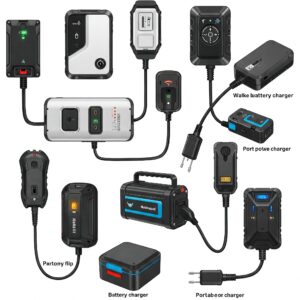
1. NOCO Genius10 – Best Overall Ebike Battery Charger
The NOCO Genius10 stands out as the most versatile and reliable ebike battery charger on the market today. This intelligent charger works with virtually all ebike battery types and includes advanced recovery modes that can revive batteries other chargers might reject as dead.
Key features:
- Compatible with 6V and 12V batteries (connect in series for 24V, 36V, 48V systems)
- 10-amp charging capability
- Temperature compensation for optimal charging in any environment
- Recovery mode for sulfated or deeply discharged batteries
- Exceptionally rugged construction for workshop or travel use
What I love about this charger is its versatility—it’s not just for ebikes, but can charge automotive, marine, and other batteries, making it a great all-around investment for active households.
2. Luna Cycle Advanced Charger – Best Smart Charger
The Luna Cycle Advanced Charger represents the cutting edge of ebike battery charging technology, with customizable settings that allow you to prioritize either battery longevity or faster charging based on your needs.
Key features:
- Adjustable current from 1A to 5A
- Configurable charge percentage (80% for maximum battery life, 100% for maximum range)
- Compatible with 48V and 52V battery systems
- Crystal-clear LCD display showing charging status
- Fanless design for silent operation
What truly sets this charger apart is its ability to limit charging to 80-90% when maximum battery longevity is more important than absolute maximum range—a feature battery experts consistently recommend.
3. Bosch 4A Ebike Charger – Most Reliable Brand-Name Option
When it comes to dependability and support, the Bosch 4A Ebike Charger is hard to beat. As one of the leading names in ebike systems, Bosch has developed a charger that perfectly balances charging speed, safety, and battery care.
Key features:
- 4-amp charging current
- Compact, portable design
- Exceptionally quiet operation
- Compatible with all Bosch ebike batteries
- Industry-leading 2-year warranty
While it’s primarily designed for Bosch-powered ebikes, this charger’s reputation for reliability and safety makes it worth considering even if you need to use an adapter for your non-Bosch system.
4. Juiced Bikes Super Charger – Fastest Charging Option
For riders who prioritize minimizing downtime between rides, the Juiced Bikes Super Charger delivers impressive charging speeds without compromising safety.
Key features:
- 8-amp charging current (twice the standard rate)
- Reduces charging time by up to 50%
- Active cooling system prevents overheating
- Compatible with most 48V and 52V systems
- Built-in safeguards prevent battery damage
While regular use of such a fast charger may have some impact on total battery lifespan, the advanced thermal management system mitigates much of this concern.
5. Grin Technologies Cycle Satiator – Most Programmable Charger
The Grin Technologies Cycle Satiator is the tinkerer’s dream—a highly programmable charger that can be customized to perfectly match your specific battery and charging preferences.
Key features:
- Programmable for virtually any battery chemistry and voltage
- Multiple charging profiles can be stored and selected
- Outstanding electrical efficiency (less wasted power)
- Rugged waterproof aluminum case
- Detailed charging data display
This is definitely the most technically advanced option on the list, perfect for those who want complete control over their battery charging parameters.
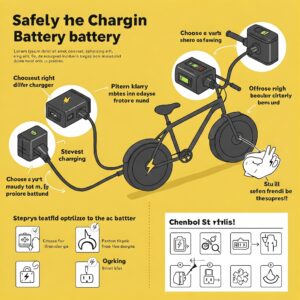
6. Voltaplex Travel Charger – Best Portable Option
The ultra-compact Voltaplex Travel Charger is designed specifically for riders who need to charge on the go, offering an impressive balance of portability and performance.
Key features:
- 50% smaller and lighter than standard chargers
- Universal input voltage (100-240V) for international use
- Woven nylon cord resists tangling and damage
- 3-amp charging provides reasonable speed
- Multiple safety certifications
At just 1.2 pounds, this charger easily fits in a backpack or even a large saddle bag, making it ideal for bike touring or commuters who need emergency charging at the office.
7. Lectric XP Smart Charger – Best Budget Smart Charger
The Lectric XP Smart Charger brings advanced features to a remarkably affordable price point, making smart charging technology accessible to more riders.
Key features:
- Switchable between fast (4A) and storage (2A) charging modes
- Built-in charge status display
- Compatible with most 48V ebike systems
- Automatic shutdown when battery is full
- Compact design with integrated cable management
This charger proves that you don’t have to spend a fortune to get smart features that help preserve your battery’s health.
8. RELiON RBC50 Series – Best for LiFePO4 Batteries
For ebikes with lithium iron phosphate (LiFePO4) batteries, which require different charging parameters than standard lithium-ion, the RELiON RBC50 Series is specifically optimized for maximum performance and safety.
Key features:
- Specifically designed for LiFePO4 chemistry
- Available in various voltage configurations
- 5-stage charging process maximizes battery health
- Robust aluminum housing for durability
- LED indicators for charge status
While more specialized than other options, this charger is the ideal choice for the growing number of ebikes using LiFePO4 batteries for their improved safety and longer cycle life.
9. BESTEK Power Inverter with Charging Ports – Best Off-Grid Option
For adventurous riders who might need to charge from their car or a portable power station, the BESTEK Power Inverter with Charging Ports offers a versatile solution that can power your ebike charger anywhere.
Key features:
- 300W power inverter converts 12V DC to 110V AC
- Two AC outlets can power your regular ebike charger
- Additional USB ports for charging other devices
- Compact design fits in vehicle glove compartments
- Built-in cooling fan prevents overheating
While not a direct battery charger itself, this inverter lets you use your standard charger in off-grid situations, making it an excellent companion for bike camping or remote riding.
10. Charge Doctor Advanced Battery Analyzer – Best Diagnostic Tool
Rounding out our list is a unique option that pairs with your existing charger. The Charge Doctor Advanced Battery Analyzer connects between your charger and battery to provide detailed information on battery health and charging efficiency.
Key features:
- Real-time voltage and current monitoring
- Calculates battery capacity and health
- Tracks charging efficiency
- Small inline device works with any charger
- Helps identify battery issues before they cause failures
While not a standalone charger, this affordable diagnostic tool can help you maximize the performance of your existing charging setup and catch potential battery problems early.
Comparison of Top Ebike Battery Chargers
| Charger Model | Price Range | Charging Speed | Smart Features | Best For |
|---|---|---|---|---|
| NOCO Genius10 | $$$$ | 10A | Yes | All-around use |
| Luna Cycle Advanced | $$$ | 1-5A (adjustable) | Yes | Battery longevity |
| Bosch 4A | $$$ | 4A | Limited | Reliability |
| Juiced Super Charger | $$$$ | 8A | No | Quick charging |
| Grin Cycle Satiator | $$$$$ | 1-6A (programmable) | Yes | Customization |
| Voltaplex Travel | $$ | 3A | No | Portability |
| Lectric XP Smart | $$ | 2-4A (switchable) | Yes | Budget-conscious |
| RELiON RBC50 | $$$ | 5A | Yes | LiFePO4 batteries |
| BESTEK Inverter | $$ | N/A | No | Off-grid use |
| Charge Doctor | $ | N/A | Yes | Diagnostics |
Don’t Miss These Exclusive Charging Deals! ⚡🔋
→ Take your ebike adventures to the next level with these carefully selected chargers. Click on any highlighted item to check current pricing and availability. These reliable charging solutions will help you spend less time waiting and more time riding!

How to Properly Use an Ebike Battery Charger
Having the right charger is only half the equation—using it properly is equally important for maximizing battery life and ensuring safety.
Basic Charging Best Practices 📋
Follow these guidelines to get the most from your ebike battery:
- Charge in moderate temperatures – Aim for room temperature (60-75°F). According to research from MIT’s Department of Materials Science and Engineering, charging lithium batteries in extreme temperatures significantly reduces their lifespan.
- Avoid frequent 100% charges – When possible, charge to 80-90% for daily use. Full charges should be reserved for when you need maximum range.
- Don’t let the battery fully deplete – Try to recharge before the battery drops below 20% capacity.
- Use the proper charger – Always use a charger designed for your specific battery voltage and chemistry.
- Allow cooling time – Let your battery cool down for 15-30 minutes after riding before connecting the charger.
- Supervise initial charging – Stay nearby for the first 30 minutes of charging to ensure everything is working normally.
- Store properly – For long-term storage (more than 2 weeks), keep the battery at approximately 40-60% charge in a cool, dry place.
Charging Safety Tips ⚠️
Ebike batteries pack a lot of energy in a small space, making proper charging safety essential:
✅ Charge on non-flammable surfaces
✅ Keep the charging area clear of flammable materials
✅ Ensure proper ventilation during charging
✅ Inspect cables and connectors for damage before each use
✅ Unplug the charger when charging is complete
❌ Never leave charging batteries completely unattended for extended periods
❌ Avoid charging immediately after riding (let the battery cool first)
❌ Don’t use chargers with damaged cables or housings
The Consumer Product Safety Commission recommends having a working smoke detector and appropriate fire extinguisher in any area where you regularly charge lithium batteries.
Troubleshooting Common Ebike Battery Charging Issues
Even with the best equipment, charging problems can occasionally arise. Here’s how to address some common issues:
Charger Doesn’t Turn On
- Check the power outlet with another device
- Inspect the charger cable for damage
- Try a different outlet, preferably on a different circuit
- Look for a reset button on the charger (some have thermal protection that requires reset)
Battery Won’t Accept Charge
- Verify the charger is compatible with your battery
- Check that connectors are clean and undamaged
- Allow the battery to cool if it’s been recently used
- If the battery has been in storage, it may need a recovery charge at a lower rate
Charging Stops Before Battery Is Full
- The charger may have overheated – allow it to cool and ensure proper ventilation
- Check for loose connections
- Some smart chargers intentionally stop at 80-90% to preserve battery life
- The battery management system may have detected a cell imbalance
Unusually Slow Charging
- You may be using a lower amperage charger than normal
- Cold temperatures can significantly slow charging rates
- As batteries age, charging efficiency can decrease
- The battery management system may be limiting charge rate due to detected issues
Excessive Heat During Charging
- Some heat is normal, but the charger and battery should never be too hot to touch
- Improve ventilation around both the charger and battery
- Consider using a charger with a lower amperage rate
- If persistent, this could indicate a developing battery or charger problem
Extending Your Ebike Battery Life Through Proper Charging
With replacement ebike batteries often costing $300-$800, maximizing your battery’s lifespan through proper charging habits is well worth the effort.
The 80% Charging Rule 📊
Battery researchers at Stanford University have found that regularly charging lithium-ion batteries to only 80-90% of capacity, rather than 100%, can potentially double the number of useful charging cycles.
For everyday riding, consider using a smart charger that allows you to limit charging to 80%. Save the 100% charges for occasions when you truly need maximum range.
Temperature Considerations 🌡️
Temperature has a dramatic effect on both battery performance and lifespan:
- Charging is most efficient between 60-75°F (15-24°C)
- Never charge a frozen battery
- Allow hot batteries to cool before charging
- In very hot weather, consider charging during cooler nighttime hours
Seasonal Charging Strategies 🍂
Adjust your charging habits based on the season and your riding patterns:
Summer Riding Season:
- Charge to 80-90% for regular rides
- Only charge to 100% before longer trips
- Allow extra cooling time before charging after rides in hot weather
Winter Storage:
- For bikes stored more than 2 weeks, maintain charge at 40-60%
- Check charge level monthly during storage
- Store in a cool but not freezing location
- Consider using a smart charger with storage mode
Balanced Charging for Multi-Cell Batteries 🔄
Most ebike batteries contain multiple cells that can develop slight imbalances over time. Periodic balanced charging helps maintain peak performance:
- Use a charger with a balance mode or BMS (Battery Management System) support
- Allow a full balance charge cycle once every 10-15 regular charges
- Balance charging typically takes longer but helps ensure all cells remain at similar charge levels
DIY vs. Professional Charger Options
When shopping for a new ebike battery charger, you’ll encounter both official manufacturer chargers and third-party alternatives. Each approach has its pros and cons.
OEM Chargers
Advantages:
- Guaranteed compatibility
- Often designed with specific battery management systems in mind
- Usually covered under the bike’s warranty
- Technical support available from the bike manufacturer
Disadvantages:
- Typically more expensive
- May lack advanced features of third-party options
- Limited selection of charging rates
Third-Party Chargers
Advantages:
- Often more affordable
- Frequently offer additional features (adjustable current, displays, etc.)
- May charge faster than stock chargers
- One charger might work with multiple ebikes
Disadvantages:
- Potential compatibility issues
- May void warranty if they cause battery damage
- Quality can vary significantly between brands
Making the Right Choice
If your ebike is under warranty, using the manufacturer’s recommended charger is the safest option. For older bikes or for riders seeking additional features, quality third-party chargers from reputable brands can offer excellent value and functionality.
According to Consumer Reports, when choosing third-party chargers, look for those with UL, ETL, or CE safety certifications and positive reviews from other ebike owners with the same bike model as yours.
Power Up Your Rides With The Perfect Charger! 🚴♂️⚡
→ Don’t compromise on your ebike’s most critical accessory. The right charger doesn’t just power your rides—it protects your investment and ensures years of reliable performance. Check out these top-rated options today and give your ebike battery the care it deserves!
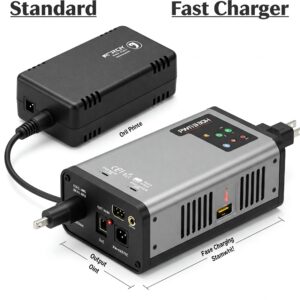
The Future of Ebike Battery Charging Technology
The technology behind ebike battery chargers continues to evolve rapidly. Here’s a glimpse of what’s coming in the next few years:
Gallium Nitride (GaN) Chargers
This emerging semiconductor technology allows for significantly smaller, lighter, and more efficient chargers. Several manufacturers are beginning to release GaN-based ebike chargers that are half the size and weight of traditional options while delivering the same or better performance.
Wireless Charging
Following the lead of smartphone technology, wireless ebike charging pads are beginning to appear on the market. While currently less efficient than direct connections, this technology promises greater convenience, especially for daily commuters who can simply park their bike over a charging pad.
Solar Integration
Portable solar panels designed to directly charge ebike batteries are becoming more practical as panel efficiency improves. These systems are particularly appealing for bike touring and off-grid use, potentially allowing unlimited range for adventure riders.
AI-Driven Battery Management
The next generation of smart chargers will likely incorporate artificial intelligence to analyze battery usage patterns and optimize charging strategies automatically. These systems will balance performance needs with battery longevity based on how you actually use your ebike.
Bidirectional Charging
Some emerging systems allow ebikes to serve as portable power banks, providing emergency power to household devices during outages. This technology treats the ebike battery as part of a wider energy ecosystem rather than just a transportation component.
Conclusion: Investing in Quality Charging for Long-Term Savings
While it might be tempting to save money by purchasing the cheapest compatible charger for your ebike, this is one area where quality truly matters. A premium ebike battery charger is an investment that pays dividends through extended battery life, improved performance, and enhanced safety.
When you consider that a replacement ebike battery can cost several hundred dollars, spending a bit more on a quality charger that might add years to your battery’s useful life becomes a clear economic choice. Add in the convenience of faster charging, the security of better safety features, and the satisfaction of maximum performance, and the value proposition becomes even stronger.
Whether you opt for the versatile NOCO Genius10, the feature-rich Luna Cycle Advanced Charger, or any of the other quality options we’ve discussed, choosing a charger that matches both your specific battery and your personal riding habits will help ensure that your ebike remains a reliable, enjoyable, and cost-effective transportation option for years to come.
Remember that the best charger for you depends on your priorities—maximum battery life, fastest charging time, greatest portability, or highest versatility. By understanding the options available and following proper charging practices, you can significantly enhance your electric riding experience while protecting your valuable battery investment.
Take Charge of Your Ebike Experience Today! 🔋🚵
→ Your ebike is only as good as its charging system. Whether you need faster charges, smarter battery management, or more portable power solutions, upgrading your charger is one of the most impactful improvements you can make. Browse these top-rated options to find your perfect charging match!

More FAQ
❓ What charger do I need for my ebike battery?
✅ To choose the right ebike battery charger, match the voltage and connector type of your battery. Always check your battery's specs before purchasing a new charger…
❓ Can I use any charger for my ebike?
✅ No, using the wrong charger can damage your battery or reduce its lifespan. Only use chargers compatible with your ebike’s voltage and connector type…
❓ How long does it take to charge an ebike battery?
✅ Most ebike battery chargers take between 3 to 6 hours to fully charge a standard battery, depending on battery capacity and charger amperage…
❓ Is fast charging safe for ebike batteries?
✅ Fast charging can be safe if supported by your battery and charger, but frequent use may generate heat and shorten battery life over time…
❓ Can I charge an ebike battery with a solar charger?
✅ Yes, solar ebike battery chargers exist, but they require sufficient wattage and compatible voltage output. Charging time is longer and depends on sunlight conditions…
Recommended for You:
- Ultimate Guide to E Bike Chargers: Power Up Your Rides with the Best Options in 2025
- Dual Battery Ebike: Ultimate Power Guide For Extended Adventures in 2025
- 10 Best Big Sur Ebike Trails For Breathtaking Coastal Adventures in 2025
Disclaimer: This article contains affiliate links. If you purchase products through these links, we may earn a small commission at no additional cost to you.
